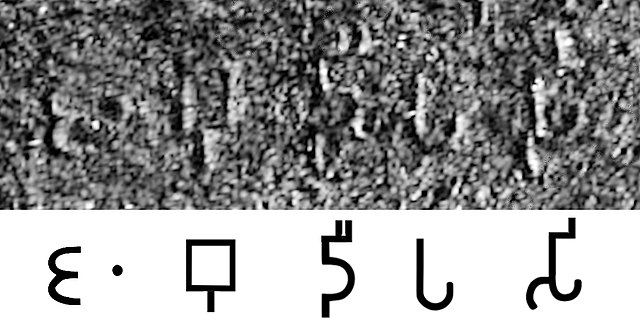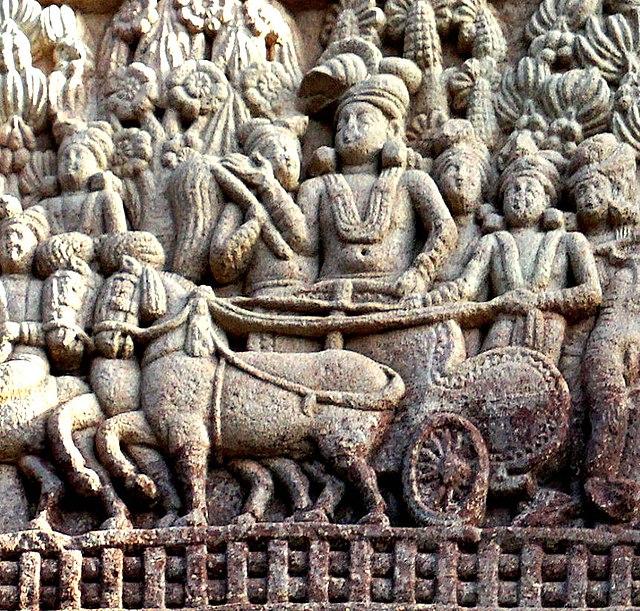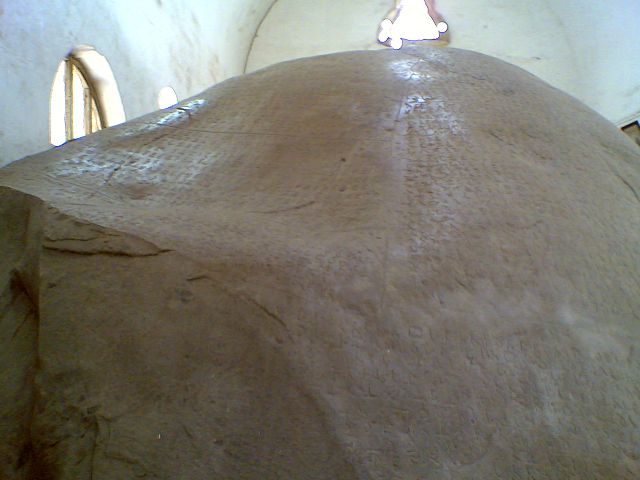Jambudvīpa is a name often used to describe the territory of Greater India in ancient Indian sources.
The Prakrit name Jambudīpasi (Sanskrit "Jambudvīpa") for "India" in the Sahasram Minor Rock Edict of Ashoka, circa 250 BCE (Brahmi script)
Jambudvīpa
Ashoka, popularly known as Ashoka the Great, was the third Mauryan Emperor of Magadha in the Indian subcontinent during c. 268 to 232 BCE. His empire covered the largest part of the Indian subcontinent, stretching from present-day Afghanistan in the west to present-day Bangladesh in the east, with its capital at Pataliputra. A patron of Buddhism, he is credited with playing an important role in the spread of Buddhism across ancient Asia.
A c. 1st century BCE/CE relief from Sanchi, showing Ashoka on his chariot, visiting the Koliyas at Ramagrama.
Ashoka's Major Rock Edict at Junagadh contains inscriptions by Ashoka (fourteen of the Edicts of Ashoka), Rudradaman I and Skandagupta.
King Ashoka visits Ramagrama, to take relics of the Buddha from the Nagas, but in vain. Southern gateway, Stupa 1, Sanchi.
The Major Rock Edict No.13 of Ashoka, mentions the Greek kings Antiochus, Ptolemy, Antigonus, Magas and Alexander by name, as recipients of his teachings.






